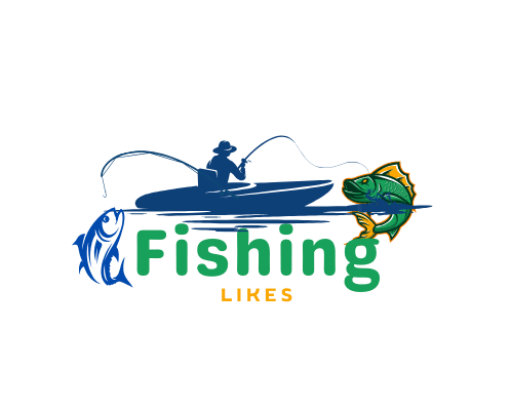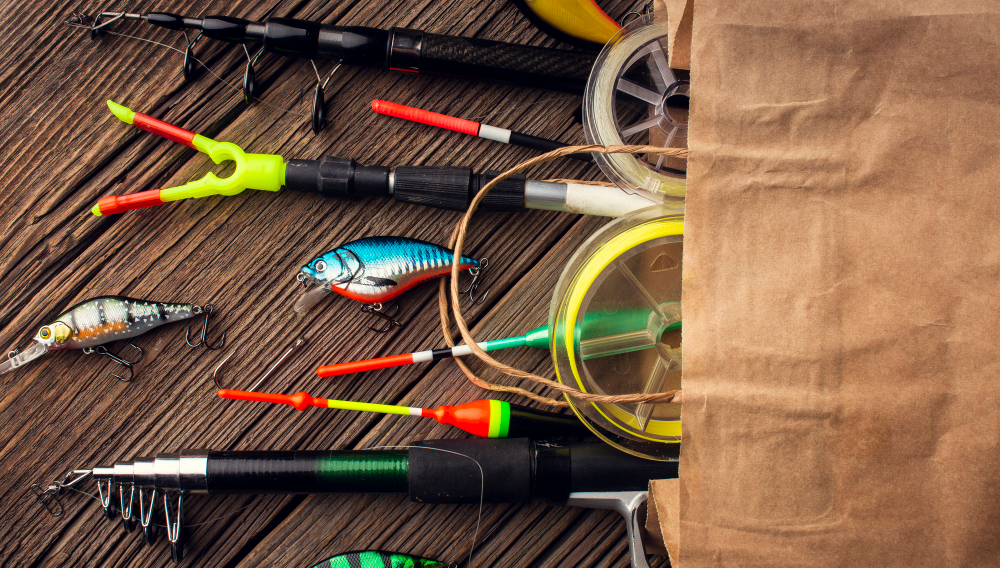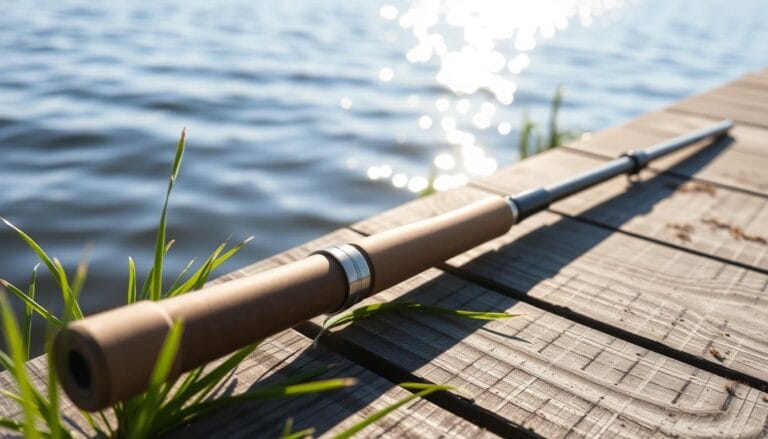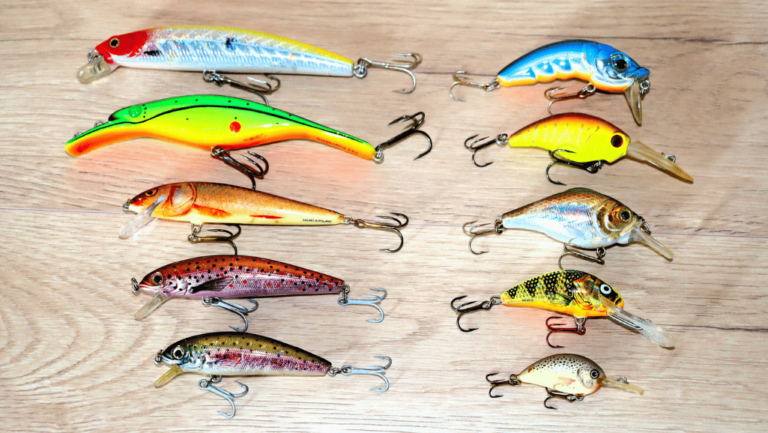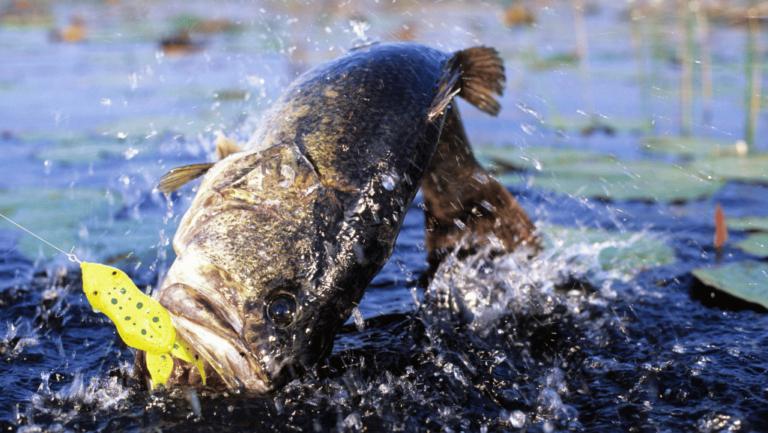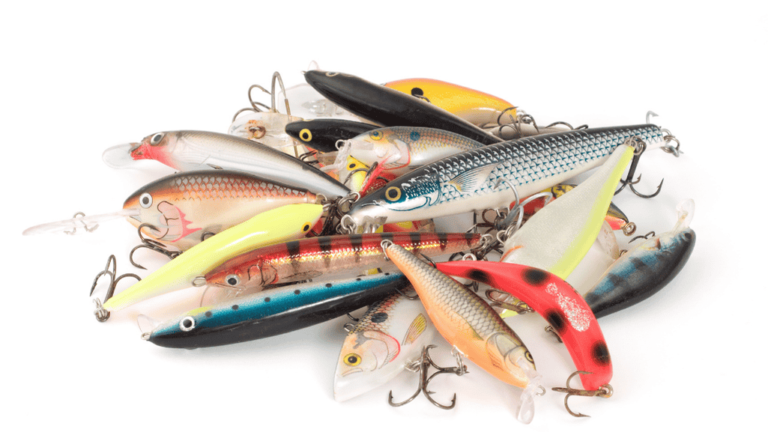Starting to learn fishing for beginners is more than just a new hobby. It’s a way to connect deeply with nature. This guide will help you start fishing, from picking the right rod to learning important safety tips.
With this guide, beginners can find peace and maybe even a new way to get dinner. To catch your first fish, make sure you have a fishing license and the right gear. Learning about fishing isn’t just about catching fish. It’s also about respecting nature and understanding how to keep fishing sustainable for the future.
Key Takeaways
- Securing a fishing license is the first regulatory step in the fishing process.
- Beginners should start with a light rod of appropriate length for ease of handling.
- Learning fishing knots and casting techniques is pivotal to self-sufficiency.
- It’s important to understand and respect wildlife conservation laws and local regulations.
- Start with basic equipment and focus on the experience of fishing rather than the complexity of the gear.
- Seek resources and guidance, such as a fishing for beginners guide, to broaden your understanding and skills.
Embracing the Fishing Experience
Starting to fish can be a peaceful way to connect with nature. Whether you’re fishing in quiet lakes or lively coastal areas, you can learn to become a skilled angler. Fishing basics are key, teaching beginners simple techniques and the right gear.
Beginners often start with the spinner method. This uses a spinning rod and reel, great for beginners with live bait or lures. These first steps build confidence and lay a strong foundation for your fishing skills.
As you get better, you might want to try different fishing styles like fly-fishing or saltwater fishing. Each type has its own challenges and rewards. It’s important to keep learning and adapt your strategies.
Fishing is more than just catching fish. It’s a way to relax and connect with nature. About 49 million Americans fish every year, finding peace away from daily life. Fishing not only helps people relax but also supports nature by protecting fish habitats through licenses and donations.
Fly fishing is a popular choice for those who love the sport. It requires mastering casting to send a lightweight lure flying. For beginners, the Redington Crosswater Combo is a great choice. Paired with the right line, like the Scientific Anglers Floating Line, it helps you learn how to cast.
Choosing the right gear is crucial in fishing. Here’s a quick guide for beginners:
| Item | Description | Benefits |
|---|---|---|
| Fly Rod | 7-weight, medium-fast action, well-balanced design | Suitable for bass fishing, provides good control and precision |
| Fly Line | Cortland Bass Fly Line, weight-forward design | Facilitates effortless casting and accurate presentations |
| Bass Leader | Cortland nylon tapered, 7.5-feet, 10-pound rating | Optimal length and strength for targeting bass |
| Tippet | Rio’s Powerflex, flexible design for natural presentation | Increases the likelihood of a successful catch due to its natural flow in water |
Learning to fish is not just about techniques. It’s about embracing a lifestyle that respects nature and the fishing community. As you join the fishing world, you’ll grow personally and appreciate this timeless sport even more.
Essential Beginner Fishing Gear
Starting with fishing requires the right gear. It’s key for those new to the sport. This guide will cover the basics of fishing gear, how to set it up, and choosing the right bait and lures.
Selecting Your First Fishing Rod
Choosing the right fishing rod is important for beginners. A 6’6” spinning rod with a 2000 spinning reel is a good choice. It’s versatile and easy to use. For an even simpler setup, consider a 6’6″ spincast rod with a 150-size spincast reel.
The Role of Reels: Spin-Casting vs. Spinning Reels
Choosing the right reel is crucial for fishing success. Spin-casting reels are great for beginners because they’re easy to use. They have a push-button operation that makes learning simpler. Spinning reels offer more control and are good for those wanting to improve their skills.
Hook, Line, and Sinker: Setting Up Your Equipment
Setting up your gear includes attaching the right line, hook, and weights. Start with the Berkley Trilene Smooth Cast in 10lbs for strength and ease. Learn the improved clinch knot to secure the hook. Use basic hooks, weights, and floats to keep bait in place and attract fish.
Choosing the Right Bait and Lures
Choosing the right bait and lures is key to catching fish. Beginners should try live baits like worms or minnows and simple lures like the 1-2 soft plastics Yamamoto Senko worm or a Northland Fishing Tackle spinnerbait. These imitate natural food sources and increase your chances of catching fish.
| Fishing Gear | Description | Price Range |
|---|---|---|
| Spinning Rod & Reel Combo | 6’6” rod with 2000 reel, suited for various fishing situations. | $50 – $130 |
| Spincast Rod & Reel Combo | 6’6” rod with 150-size reel, best for ease of use. | $50 – $130 |
| Beginner Lures | Soft plastics, spinnerbaits, top-water lures | Varies |
| Tackle Bag/Box | Plano Guide Series Tackle System, for organizing gear. | Depends on model |
| Fishing Line | 10 lb. Berkley Trilene Smooth Cast | Under $10 |
This gear setup is perfect for beginners. Practice your casting and learn about local fishing spots for a great experience.
Understanding Fishing Licenses and Regulations
When starting with fishing 101 for beginners, it’s key to know about fishing licenses and fishing laws and regulations. It doesn’t matter if you live in the area or are just visiting. You need to understand these rules before you start fishing.
Getting a fishing license is a must in most places, and the price and rules change from state to state. For example, in Kansas, young people aged 16-20 can get a fishing license for $42.50. Non-residents pay more, at $77.50. Some groups like seniors, veterans, and National Guard members might get discounts or even free licenses.
- Residents aged 65-74 need a fishing or hunting license at all times.
- Younger people or visitors can get short-term or day licenses, like the $6.00 Resident 1-Day Fish License in Kansas.
- In places like Michigan, the fishing license lets you catch amphibians, crustaceans, and reptiles too, giving you more options with one license.
It’s also vital for beginners to follow the rules of each water body they fish in. These rules cover things like what bait and tackle you can use and how many fish you can catch. For example, Louisiana has specific gear rules for fishing certain species, showing the need to respect local nature and conservation.
Some places have easier rules for fishing. For example, California doesn’t require a fishing license to fish off a public pier. This is a great chance for beginners to try fishing without buying a license first.
For those new to fishing, knowing the local fishing laws and regulations is as important as having the right gear. Check the latest rules on the state’s forestry or wildlife department website or get a book at most fishing shops.
Most states let you buy licenses online or at some local shops, making it easy for everyone to follow the rules. So, whether you’re fishing for a day or a lifetime, knowing and following these rules will make your fishing legal and fun.
If you’re not sure about the rules, talk to local fishing groups or get advice from experienced anglers. Learning from others and using a good fishing guide for beginners can make your fishing better from the start.
Basic Fishing Techniques for Beginners
Stepping into the world of fishing can be as rewarding as it is nuanced. This guide provides the essential fishing tips for beginners that cover everything from basic knot tying to beginner fishing techniques. All designed to set you on a path of aquatic discovery.
How to Tie Beginner Fishing Knots
Mastering the art of tying fishing knots is crucial for every angler. Simple fishing tips for beginners often start with learning key knots that ensure the durability and strength of your fishing line. Here are three basic knots every novice should know:
- Improved Clinch Knot: Highly recommended for attaching your hook, snap, or swivel. It is strong yet simple to tie, making it a favorite among both beginner and experienced anglers.
- Palomar Knot: Known for its robustness and ease of tying, suitable for securing hooks, lures, or swivels directly to your line.
- Double Surgeon’s Knot: Perfect for joining two lines together. This knot is both easy to tie and extremely effective, especially when using two fishing lines of different diameters.
Mastering the Cast: Techniques and Tips
One of the foundational fishing techniques for beginners is casting. Proper casting ensures your bait reaches the targeted spot in the water, maximizing your chances of a catch. The two primary types of reels beginners start with are:
- Closed Spin-Casting Reels: Ideal for simplicity and ease of use, involving a push button to release the line during a cast.
- Open-Bail Spinning Reels: Requires a bit more skill with manual release of the line using the finger, which offers better accuracy and control.
Practice is essential. Start in an open area without hooks to perfect your technique, learning to adjust the timing of your release. Remember, frequent misfires often teach valuable lessons in timing and force adjustment.
| Knot Type | Description | Usage |
|---|---|---|
| Improved Clinch Knot | Strong and easy to tie | Attaching hooks, snaps, or swivels |
| Palomar Knot | Strong and simple, prevents slippage | Securing hooks, lures, swivels directly to line |
| Double Surgeon’s Knot | Suitable for different diameters | Connecting two lines |
Starting your fishing journey with these simple fishing tips for beginners will not only enhance your skills but also make your experience more enjoyable. Remember, every cast and knot tied brings you closer to becoming the seasoned angler you aspire to be!
How to Fish for Beginners
Starting your fishing for beginners 101 journey means knowing where and when to fish. It’s key to find spots with underwater features like depth changes and different bottoms. These are where fish like to hang out. Morning and evening are best times to fish, especially at dawn and dusk when fish are most active.
Choosing the right lure is crucial for beginner-friendly fishing techniques. The color of the water affects what lure to use. For green water, go with lime or chartreuse lures. In clear water, white or pearl lures are better. Root beer colored lures are best in tannic-stained waters.
Understanding tides and currents is important, especially in saltwater. It changes how fish feed. Beginners should set the reel’s drag to about one-third of the line’s strength to avoid losing fish. Learning different fishing methods can also make your fishing better.
Knowing about fishing laws and ethics is important too. In Texas, fishing license fees help conservation efforts. Joining community events and reading digital magazines like Texas Parks & Wildlife Magazine can help you learn more about fishing.
To wrap it up, learning to fish well means picking the right time and spot, understanding your gear, and knowing the rules. This approach helps you catch more fish and protects nature for the future.
The Ethics of Catch and Release
Fishing is more than just the thrill of catching fish. It’s about responsible angling practices and keeping our water ecosystems healthy. Catch and release ethics help protect fishing for future generations.
Fish handling techniques are key to successful catch and release. They affect fish survival and the health of fish populations. Modern anglers should follow safety tips to make fishing safe and ethical.
Proper Handling for Catch and Release
To follow catch and release ethics, anglers should handle fish gently and keep their hands wet. This helps keep the fish’s slime coat intact, which is crucial for fighting diseases. Using tools like rubber nets and proper dehooking methods makes releasing fish safer.
Techniques to Ensure Fish Survival
Using the right fish survival techniques is essential. Anglers should prefer hooks like circle hooks or those with crimped barbs for easier release. If a fish swallows a hook, cutting the line near the mouth is better than trying to remove the hook.
Gently swaying the fish in the water can help revive it before release. This ensures it gets enough oxygen. Responsible angling practices show respect for our water environments. They help protect fish populations for the future.
Fishing Safety: Staying Safe On and Off the Water
For beginners, it’s key to follow safe fishing practices for a fun and safe time. Following fishing 101 for novices keeps you safe, protects nature, and its creatures. We’ll cover important safety tips, from gear to handling wildlife.
- Use waterproof sunscreen with SPF 50 to protect against UV rays. Reapply every two hours, or more if sweating or getting wet.
- Wear eye protection to avoid injuries from hooks and the sun.
- Knowing the water temperature is key, especially in nature. Hypothermia can happen fast in water over 80 degrees Fahrenheit.
- Wear the right footwear and waders for safety and comfort. This helps prevent slips and falls.
During Fishing
- Watch the tides and currents, especially in rivers and coasts. Know the environment’s changes, like tides every six hours, to avoid surprises.
- Use a buddy system when wading or crossing rivers for stability and support. Holding onto each other’s belts helps prevent accidents from sudden deep water.
- Always carry a whistle and a personal flotation device on watercraft.
- Learn about fish spawning times and safe fishing practices to not disturb fish.
Encountering Wildlife
- Be alert for wildlife signs. Use bear-safe facilities for fish remains in parks to lower encounter risks.
- Carry bear spray and know how to use it in areas with bears and other predators.
For beginner angler advice, these safety steps can make fishing safe and enjoyable. Always respect nature and stay alert to fully enjoy fishing’s rewards.
Conservation and Respect for Nature
As more people take up fishing basics for newbies, it’s key to care for our environment. Over 50 million Americans fish every year. They do it for fun and to connect with nature. But, we must also protect the ecosystems we love.
This guide aims to teach respect for our waters. It shows how to protect them and fight against invasive species. By learning our impact, anglers can help the environment while enjoying fishing.
Pack In, Pack Out: Minimizing Environmental Impact
Learning to fish isn’t just about skills and gear. It’s also about leaving no trace. We must take all our trash, including plastic and fishing lines, back with us. This helps keep our fishing spots beautiful and safe for nature.
Understanding Invasive Species and Their Effects
Stopping invasive species is key to protecting our fishing spots. These unwanted plants and animals can change habitats and hurt native life. We should never move fish or plants around and avoid releasing live bait. Following these rules keeps our waters healthy and fun for fishing.
By following these tips, every fisher helps protect our waters. It’s not just about catching fish. It’s about making a positive change for the future of fishing.
Conclusion
Fishing is full of exciting chances and rewarding moments for beginners. Learning the basics is key to a successful fishing journey. It includes mastering simple fishing methods for starters. These skills help you catch fish while respecting the environment and following the rules.
For beginners, the best fishing spots are places that are easy to learn and practice. You can fish in calm lakes, fast streams, or big oceans. Each place needs its own gear and techniques, making fishing both fun and challenging. The In-Fisherman’s Critical Concepts series shares important tips on fishing for species like brown trout.
Starting with easy fishing spots is just the start. Learning about ecosystems and fish behavior is crucial. It helps us enjoy fishing responsibly, keeping nature in balance. Catching your first fish can spark a lifelong love for fishing, connecting you with nature’s beauty.
